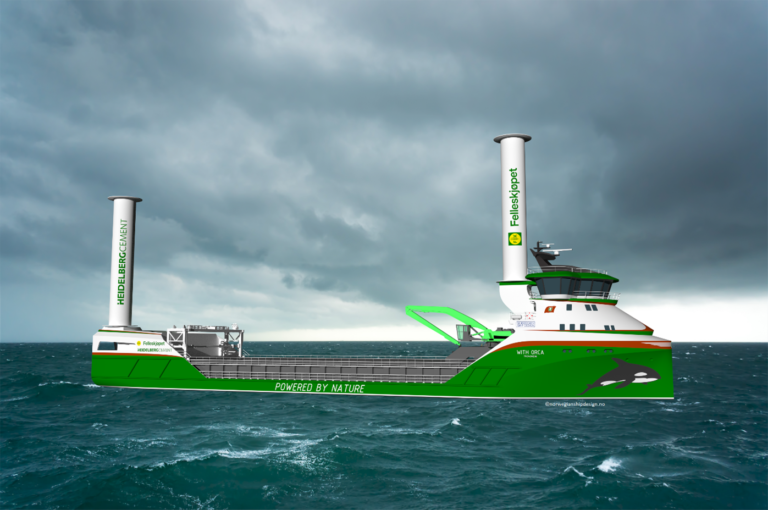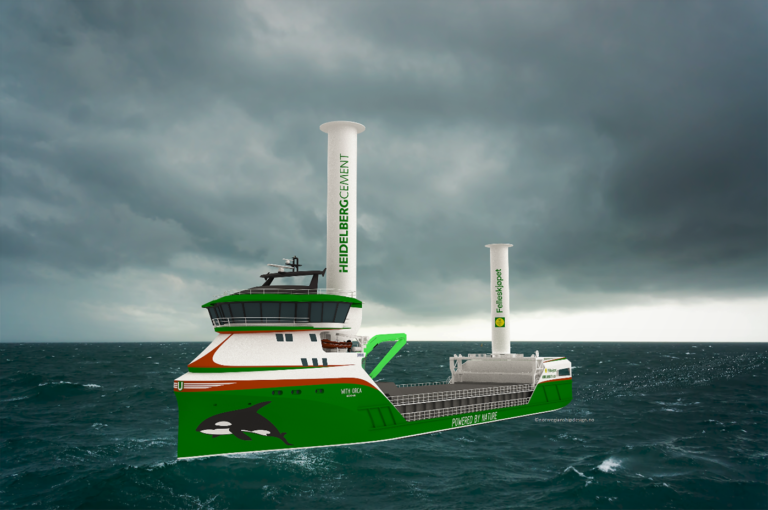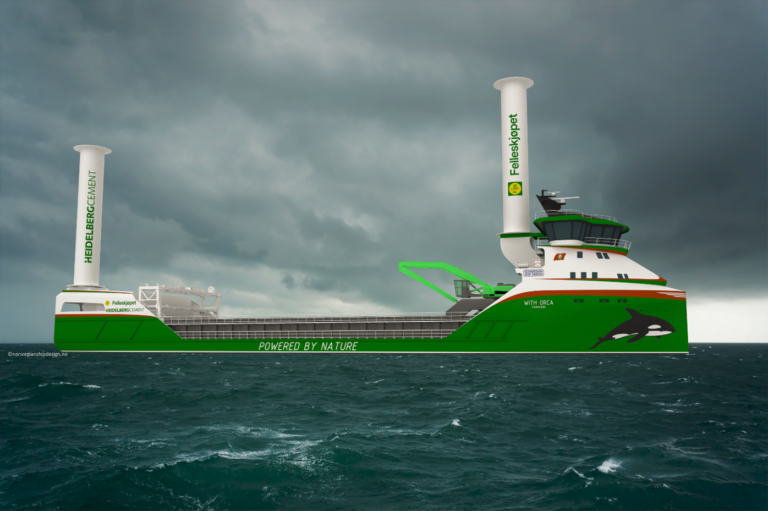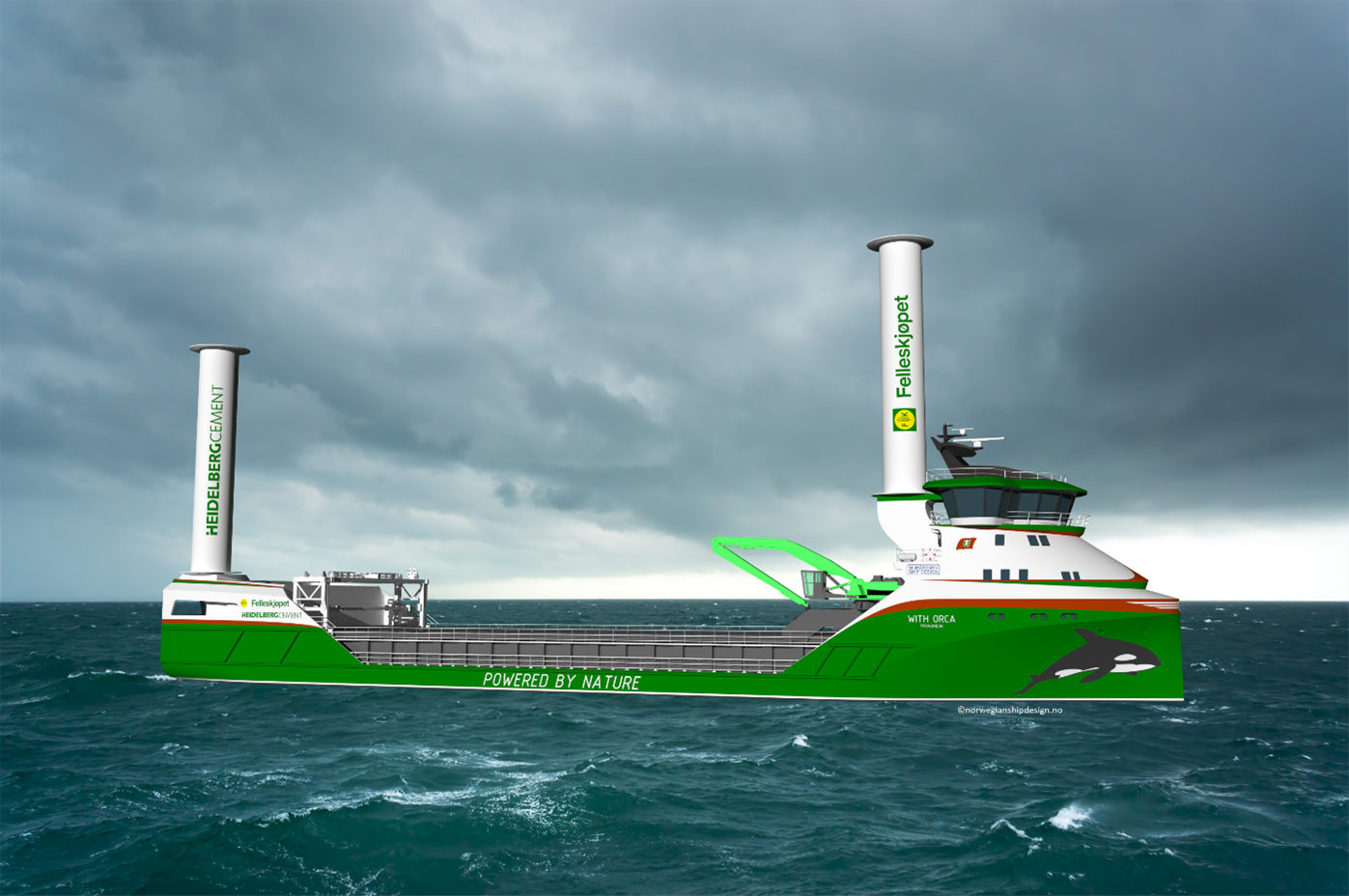It may be powered with compressed green hydrogen, but it will use as little of it as possible
The first vessel to be specially built to be powered by hydrogen will have everything on board it can to use as little of it as possible. Even in a decarbonised world, energy efficiency is going to be key as clean fuels such as e-methanol, hydrogen and ammonia will be expensive and sought after by other sectors.
Below are artistic impressions of how “With Orca” will look, or likely look. It will be the world’s first hydrogen-powered cargo vessel. On top of that it would well be the first newbuilding with a dedicated wind assist rotor system on board, as well as fuel cells and marine batteries.
It is also going to be built capable of using shore electricity when in port. If it all sounds like a lot of technology on one ship, it is, and it is because the cost of hydrogen when this vessel is delivered will be expensive.
The engine’s fuel will be in the form of compressed hydrogen loaded on a pair of swappable containers that can hold 4.3 tonnes of compressed hydrogen gas.
Even though the vessel will have zero emissions, due to the cost of the fuel the vessel is being designed very much with energy efficiency in mind.



The 88m vessel design came from a consortium which includes shipowner Norwegian owner Egil Ulvan Rederi and Norwegian Ship Design. They won a tender put out last year by two Norwegian bulk cargo producers, aggregate producer Heidelberg Cement and Felleskjøpet, a Norwegian grain and cereal buyer, who saw an opportunity to pool their transport needs and make a mark on the shipping sector. The aim is to get the 5.500 dwt vessel in the water in 2023 and in service by 2024.
Speaking at a recent Norwegian cluster hydrogen event Heidlberg Cement Logistics project manager Lars Erik Marcussen said that such a vessel is more than twice the cost of a similar diesel powered vessel, and would not have been possible without Norwegian government agencies putting up significant funding to get the vessel built.
With regard the onboard energy saving systems he added that it is about using as little energy as possible as hydrogen will be expensive, especially in the beginning.
He said has been important to take long term view as a cargo owner and charterer of tonnage, hence why Heidelberg Cement and Felleskjøpet were able to offer a 15-year contract for the vessel to secure interest by shipping companies. They received over 30 proposals partly on the back of this security.
Another factor was the need to secure a fuel contract, and for that Heidelberg and Felleskjøpet offered a five-year contract for the hydrogen supply, eventually signing with Norwegian utility companies Statkraft and Skagerak Energi.
Egil Ulvan Rederi said earlier in the year it hopes to be able to sign a contract with a shipyard before the end of 2021 for construction to then begin to achieve the deadline of getting the vessel in the water by 2023 and in service for the charterers by 2024.































